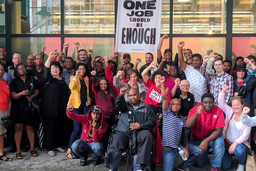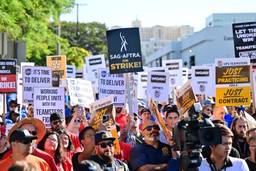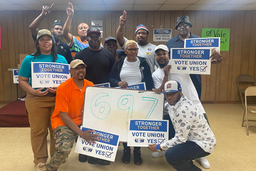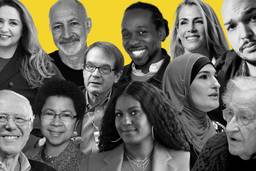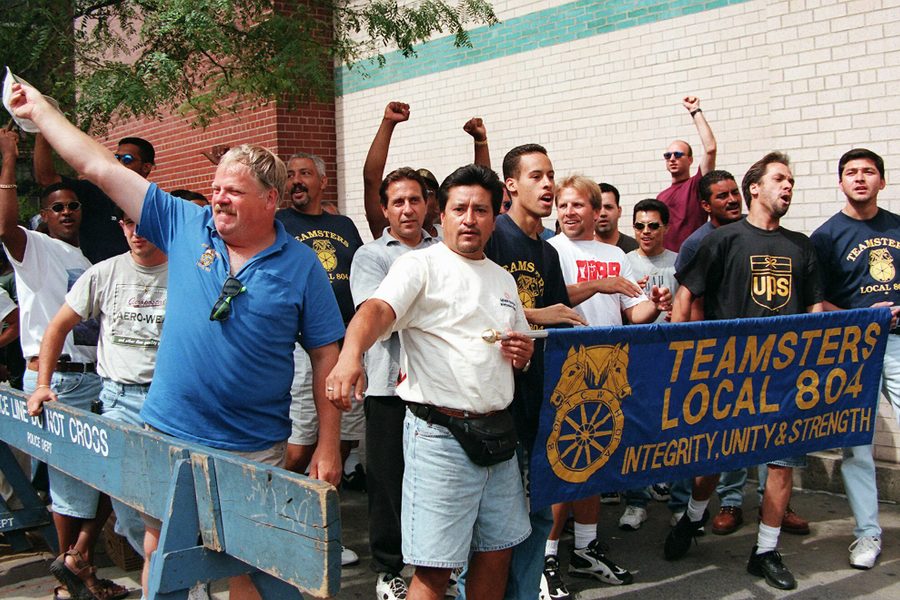
While most large labor union organizing stories of the last decade have been dark tales of hostile employers, indifferent government bureaucrats and powerless workers, one such effort stands out in hopeful contrast — the national school bus drivers campaign spearheaded by the Teamsters union.
The campaign marked a major milestone last month when it notched an election victory in the northern California towns of Hayward and Livermore. That vote added only 159 workers employed by Durham School Services to the union rolls, but it also represented the 300th bus driver election victory for the Teamsters over the last six years. Cumulatively, the election wins have resulted in the addition of some 32,000 new union members at Teamster locals across the country.
These numbers are impressive by themselves, but the campaign is far from over. If anything, the effort to sign up more bus drivers is picking up steam, said Kim Keller, deputy organizing director of the union. The Teamsters are confident they can organize the bulk of some 68,000 drivers employed by First Student Inc., the country’s largest single school bus operator. And there are many smaller companies, including Durham, where low wages and paltry benefits are creating a grassroots demand for union representation, Keller said.
Organizing success at this level is not solely the result of spontaneous bursts of activism by bus drivers in the school parking lot, but also the fruit of years of effort preparing the groundwork, according to Keller and other labor observers. Energy from the rank-and-file is essential to success in any organizing drive, she commented, but a support network like the one created by the Teamsters can make the difference between a sputtering local protest and lasting organizing success.
For the Teamsters, that support network has been built up carefully over the years with an initial focus on First Student, a Cincinnati-based company with operations in 42 U.S. states and eight Canadian provinces. First Student is said to be largest private operator of school buses in North America, with direct control over 60,000 vehicles and a growing army of employees. First Student, in turn, is owned by the British transport conglomerate First Group.
The company has grown rapidly in the U.S. as local school systems shed their own bus fleets and turn to private contractors to provide transportation for the kids. Much of the cost savings from these moves comes from eliminating the schools’ bus fleet employees, who in the past had often been able to secure decent wages and benefits.
Joni Cleveland is a bus driver in Omaha, Neb., with a close-up view of this development. An employee of a number of different bus operators for 20 years, she saw the company she worked for purchased by First Student. Soon after, worker discontent with the low wages, paltry benefits and difficult working conditions spurred talk among the drivers of forming a union.
“I wasn’t too open to joining a union in the beginning,” she told In These Times. “People told me that a union was just another business, and I didn’t need another boss,” Cleveland said.
But her experience in a second job as a manager at a Kentucky Fried Chicken restaurant changed her outlook. “When you work as manager at KFC you have a contract with the company. That’s just fair to the employee. Everybody should have the same chance to have a contract” with the employer, she said.
The second job at KFC was necessary, according to Cleveland, because it was impossible to live on the pay provided by First Student. The basic starting wage was $13.52 an hour when the Teamster organizing campaign began in 2008, he said, and there were no paid benefits at all. “They had a healthcare plan, but you have to pay about $300 a month for a family plan. Nobody can afford that on the kind the pay you earn driving a bus for them,” she said.
When the Omaha bus drivers were ready to talk union, the Teamsters were ready, Keller said. The union’s organizing department was experienced in these situations and Teamsters Local 554 was already there in Omaha with the local knowledge and contacts to move the campaign forward. Once underway, the campaign moved quickly, Cleveland reports, and a National Labor Relations Board election showed about 80 percent of voters favored the union.
With a union contract in place, starting wages have risen to $15.62 an hour and some halting progress has been made in introducing benefits, Cleveland said. Such improvements are typical nationally, Keller added, with a union contract generally improving wages by about $1 per hour to start. Improvements in workplace policies affecting the bottom line also usually follow a union contract, she said.
Key to the rapid progress, according to Keller, is a corporate labor policy at First Student on “Freedom of Association.” That policy maintains that the company will respect the right of workers to form unions and not actively suppress organizing campaigns, as is common elsewhere in American business. The policy was adopted in 2007, Keller reports, following sustained lobbying and pressure by the Teamster leaders in partnership with the British union UNITE, which represents U.K. road and rail workers employed by First Student’s parent company. Since 2007, the two unions have worked steadily to broaden the corporate labor policy, and establish monitoring and safeguard procedures so that unions have a level playing field for organizing.
For Keller, the February election milestone for the campaign was a cause for celebration, but not for a declaration of victory. It has been one of the most successful organizing initiatives in the country, yet the conditions faced by bus drivers are slow to improve. She estimates the national average for wages is still only about $12 an hour, and the industry continues to resist offering meaningful benefits to most drivers. In one heart-breaking episode in the recent Hayward-Livermore campaign, organizers on a home visit found one bus driver living in a backyard storage shed because the worker couldn’t afford anything better.
“Drivers are ready to fight this system. They are ready to organize and they are ready to fight back,” Keller said. The Teamsters are pressing on with organizing work at First Student, she said, and are beginning to focus more directly on a Durham. There is a great deal of work ahead, she concluded, and the bus campaign looks to go on for years to come.
Bruce Vail is a Baltimore-based freelance writer with decades of experience covering labor and business stories for newspapers, magazines and new media. He was a reporter for Bloomberg BNA’s Daily Labor Report, covering collective bargaining issues in a wide range of industries, and a maritime industry reporter and editor for the Journal of Commerce, serving both in the newspaper’s New York City headquarters and in the Washington, D.C. bureau.
